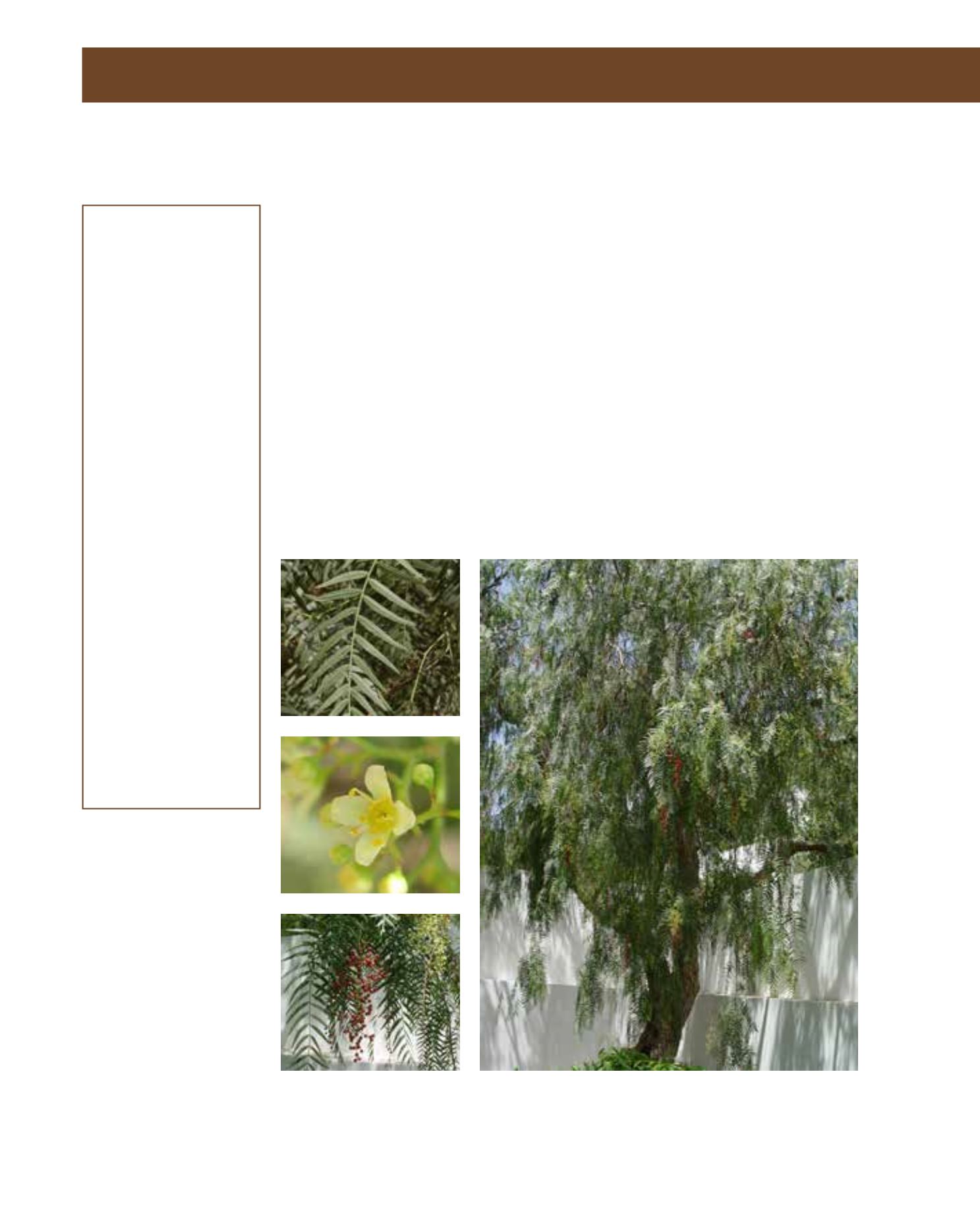

GENERAL
Origin
:
Mediterranean,
sub-tropical,
tropical
Vigour
:
normal growth
rate
Humidity
:
very humid,
extremely humid
Propagation :
sowing and
pricking out,
cuttings
Maintenance :
moderate
CONDITIONS
Urban climate :
resistant
Dessication :
vulnerable
Stagnant water :
vulnerable
Irrigation
:
high
Salinity/ppm :
high (4500 ppm)
Hardiness
:
-6°C
SHAPE
Type
:
tree
Height
:
9 m-15 m
Spread
:
7 m-15 m
Foliage
:
semi-evergreen
FLOWER
Colour
:
yellow
Size
:
5 cm - 15 cm
Period
:
April - May
Smell
:
aroma,
moderate, leaf
FRUIT
Type of fruit :
drupe(fleshy/
juicy)
Fruit size
:
0.5 cm - 0.7 cm
Toxicity
:
edible when
processed
Schinus molle, known as the Californian Pepper Tree and filfil-rafieh in Arabic, has its area of
distribution in the Peruvian Andean desert, Chile, central America and southeast Argentina. It
is not related to the pepper plant (Piper nigrum), but the edible, red fruits are similar to pepper-
corns and the tree is so called, because of their shape and taste. The evergreen to semi-evergreen
tree grows to a height of 12 metres. It has an open, umbrella-shaped crown with pendulous
branches. The leaves are alternate and pinnate with a lanceolate shape. The white male and female
flowers grow on different trees; the bloom is unimpressive, in contrast to the pinkish-red fruits,
which hang in clusters of dozens of berries nearly the whole year round. Propagation can be done
by seeds, cuttings and suckers. S. molle has an extensive, but flat root system which can be a pro-
blem for hard paving in the proximity. Tolerant of most soils, it requires full sun and is drought-
tolerant, hardy. Foliage may be damaged by frost and also suffer from insects. The Pepper Tree
comes from arid regions, but experience in Arriyadh has shown that it cannot withstand too
harsh desert conditions. In King Fahd Road, for example, it disappeared after planting, because it
needed more humidity and shelter, i.e. no hot, desiccating winds. However, it can be recommen-
ded in specific, sheltered situations in urban areas, in parks as a specimen tree and in pedestrian
precincts. Attention should be paid to the possible problems of fruit drop litter and wind damage.
275
Schinus molle,
Anacardiaceae
California Pepper Tree,
filfil rafieh
















